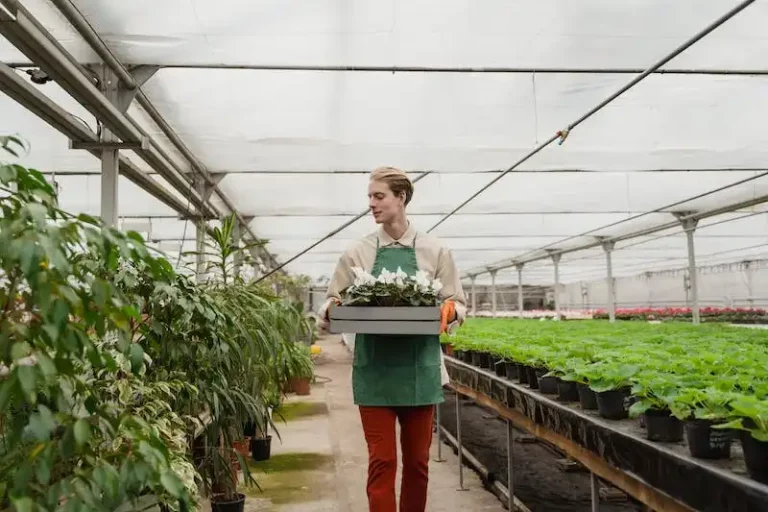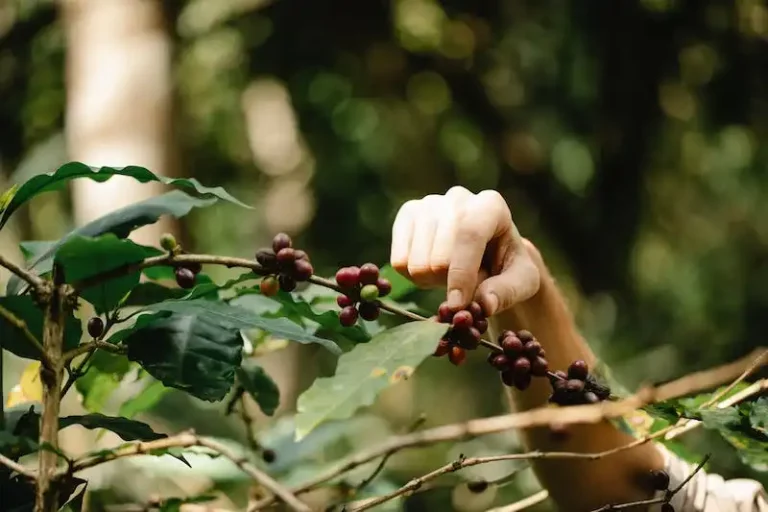Growing horseradish in home gardens can be a rewarding experience for gardeners. It is a versatile plant that has a wide range of uses, including culinary and medicinal purposes. However, to ensure the productivity and health of your horseradish plants, certain factors need to be taken into consideration.
One of the key factors to consider when growing horseradish is the preparation of the soil. Horseradish plants prefer deep, fertile soil that is well-drained. It is recommended to plant your horseradish in a sunny location, as the plants require at least six hours of direct sunlight each day. Additionally, the soil should be watered frequently to keep it moist.
Another important aspect of growing horseradish is weed control. Weeds can compete with your horseradish plants for nutrients and moisture, thereby reducing their productivity. It is recommended to use mulches, such as sawdust or straw, to prevent the growth of weeds. Additionally, regular inspection and manual removal of weeds can help maintain a weed-free garden.
When it comes to pests and diseases, horseradish plants are generally pest-resistant. However, there are certain pests and disorders that can affect their growth. Common pests include aphids, slugs, and snails, while common disorders include leaf diseases and crown rot. To control pests and diseases, organic methods such as spraying neem oil or water with a neutral detergent can be utilized.
Harvesting horseradish is an exciting moment for gardeners. The best time to harvest horseradish is during the fall or early winter months, when the leaves start to wilt and turn yellow. To harvest, the horseradish root should be dug out carefully using an angled spade. The harvested roots can be stored in a cool, dark place and used as needed.
In conclusion, growing horseradish in home gardens requires careful attention to factors such as soil preparation, weed control, pest and disease management, and harvesting techniques. By following the recommended practices, gardeners can enjoy a bountiful harvest of this versatile plant.
How to Grow Horseradish
Growing horseradish in home gardens can be a rewarding experience. Here are some tips to help you successfully grow your own horseradish:
- Selecting a Site: Choose a site with full sun or partial shade. Horseradish prefers well-drained soil with a pH between 6.0 and 7.0. Ensure that the site has good fertility and is free from weeds.
- Planting Varieties: When selecting horseradish varieties, choose ones that are known for their strong and pungent flavors. Some popular varieties include ‘Maliner Kren’ and ‘Bohemian’.
- Preparing the Soil: The soil should be well-tilled and free from large stones or roots. If necessary, amend the soil with well-decayed organic matter to improve its fertility.
- Planting Roots: Horseradish can be propagated from root cuttings or crowns. If using root cuttings, ensure that they are about 12 inches long and have at least one angled cut at the bottom. Plant the cuttings 18 to 24 inches apart in rows.
- Watering and Fertilizing: Horseradish plants should be watered regularly, especially during dry periods. Fertilize the plants with a balanced fertilizer to promote healthy growth.
- Pruning and Maintenance: Remove any flower stalks that appear as they can reduce root formation. Keep the area around the plants weed-free to prevent competition for nutrients.
- Pest and Disease Control: Horseradish is generally resistant to pests and diseases. However, if any issues arise, consult with a local gardening expert or use appropriate organic pest control methods.
- Harvesting: Horseradish roots can be harvested in the fall, usually after the first frost. Lift the roots with a garden fork, carefully severing any lateral roots. Select the larger roots for harvesting.
- Storing and Using: Clean the harvested roots and store them in a cool, dry place. You can also store horseradish roots in the refrigerator for up to several months. Use the freshly grated horseradish to make sauces or add flavor to dishes.
- Overwintering: To overwinter horseradish, mulch the plants with straw or leaves to protect them from freezing temperatures. Remove the mulch in early spring as new growth appears.
By following these guidelines, you can enjoy a bountiful harvest of horseradish and add a delicious kick to your culinary creations.
How to Plant Horseradish
Growing horseradish in home gardens is a popular choice among gardeners. This strong-flavored root crop is easy to grow, and it adds a unique taste to various dishes. If you want to add horseradish to your garden, here are some steps to consider:
Selecting a garden spot: Choose a well-drained area in your garden that receives full sun. Horseradish plants can grow in a variety of soil types, but sandy loam with a pH between 6 and 7 is ideal for optimal growth.
Preparing the soil: Before planting horseradish, loosen the soil to a depth of about 12 inches. Remove any weeds or stones from the area, as they can hinder the growth of the plants. Adding well-decayed organic matter, such as compost or manure, can also improve soil fertility and provide necessary nutrients for the plants.
Planting horseradish: Horseradish can be grown from root cuttings. Cuttings should be about 8-10 inches long and 1 inch in diameter. Dig a trench in the prepared soil, ensuring that it is wide enough to accommodate the cuttings. Place the cuttings at a 45-degree angle, with the top of the cutting about 2 inches below the soil surface. Space the cuttings about 18 inches apart in rows that are 30 inches apart.
Watering and fertilization: Horseradish plants require regular watering, especially during dry periods. It is important to keep the soil moist, but not waterlogged. Fertilize the plants with a balanced, all-purpose fertilizer according to the package instructions. Avoid over-fertilization, as this can lead to excessive foliage growth at the expense of root development.
Harvesting and storing: Horseradish roots can be harvested in early winter, after the tops have died back. Use a garden fork to carefully lift the roots from the ground. Cut off the tops, wash the roots, and store them in the refrigerator for later use. Alternatively, you can grind the roots to make horseradish sauce or preserve them in vinegar for an extended shelf life.
Pest and disease control: Horseradish plants are generally resistant to pests and diseases. However, common garden insects like aphids and flea beetles can occasionally feed on the leaves, causing minor damage. Weed control is also important to prevent competition for nutrients and space. Regularly inspect your plants for any signs of pests or diseases and take appropriate measures if necessary.
By following these steps, you can successfully plant horseradish in your own garden. Experiment with different varieties, as they can vary in flavor and heat levels. Enjoy the process of growing this culinary gem and reap the rewards of fresh, homegrown horseradish!
When to Plant
Horse radish can be planted in both spring and fall, depending on your region and growing preference. However, it is important to note that horseradish is a cool-season crop and prefers temperatures between 45 and 75 degrees Fahrenheit for optimal growth.
In regions where the winter temperatures drop below freezing, it is recommended to plant horseradish in the spring. Planting in late April or early May, when the soil has warmed up to about 50 degrees Fahrenheit, is ideal. This allows the roots to establish themselves before the hot summer weather arrives.
In regions where the winter temperatures remain above freezing, fall planting is also an option. Planting in late September or early October, when the soil temperature is still above 50 degrees Fahrenheit, allows the roots to establish before the cold winter sets in. The mild temperatures of fall also provide favorable conditions for horseradish growth.
It’s important to give the horse radish roots enough time to grow and establish before the cold temperatures of winter arrive. This will ensure a good harvest in the following year.
Horse radish can be propagated from either root cuttings or seedlings. Once planted, the roots should be watered regularly to maintain even moisture levels. However, overwatering should be avoided as it can lead to root disorders. Good drainage is essential for healthy horseradish growth.
In addition to proper planting and watering, horseradish also benefits from regular fertilization throughout the growing season. This helps to promote healthy growth and improve productivity. Horse radish can be harvested in the fall or left in the ground to overwinter and harvested in the following spring. Overwintering can enhance the flavors of the roots.
Now that you know when to plant horseradish, it’s time to learn about other important aspects of growing this versatile vegetable in your home garden.
Selecting a Planting Site
When selecting a site to grow horseradish in your home garden, there are several factors to consider. Horseradish plants require a sunny location with fertile soil. The soil should be well-drained and have a pH level of around 6.0 to 7.5. It is important to choose a site that is free from weeds and other competing plants that can hinder the growth of horseradish roots.
Horseradish plants can tolerate a wide range of soil types, but they prefer sandy loam or loamy soils. Heavy clay soils should be amended with organic matter to improve drainage. Avoid planting horseradish in areas where moisture tends to accumulate, as this can cause rotting of the roots.
Horseradish can be grown in containers, such as pots or raised beds, as long as they are large enough to accommodate the roots. The depth of the container should be at least 18 inches to allow for proper root development. Ensure that the containers have drainage holes to prevent waterlogged soil.
In terms of temperature, horseradish plants are hardy and can survive frost. However, they prefer cooler temperatures between 45 and 75 degrees Fahrenheit for optimal growth. If the temperature drops below 20 degrees Fahrenheit, it is advisable to cover the plants with a plastic sheet or bring them indoors to protect them from freezing.
Spacing is another important consideration when planting horseradish. The plants should be spaced about 24 inches apart to allow for adequate air circulation and room for the roots to grow. Avoid overcrowding, as this can lead to the spread of diseases and pest infestations.
It is also important to note that horseradish plants are part of the Brassicaceae family and can attract insects and pests commonly associated with Brassica vegetables, such as cabbage worms and flea beetles. Regular monitoring and proper pest management techniques should be implemented to prevent damage to the plants.
Before planting horseradish, it is recommended to test the soil for its nutrient content. This will help determine if any fertilizers need to be added to improve soil fertility. Horseradish plants require a moderate level of nutrients, so be sure to follow the recommendations provided by a soil test.
In conclusion, selecting the right planting site for horseradish is crucial for a successful harvest. Ensure the site has a sunny location, well-drained fertile soil, and adequate spacing between plants. Take note of the temperature requirements and consider using containers if needed. Proper soil fertility and pest management practices will help ensure healthy and flavorful horseradish roots.




